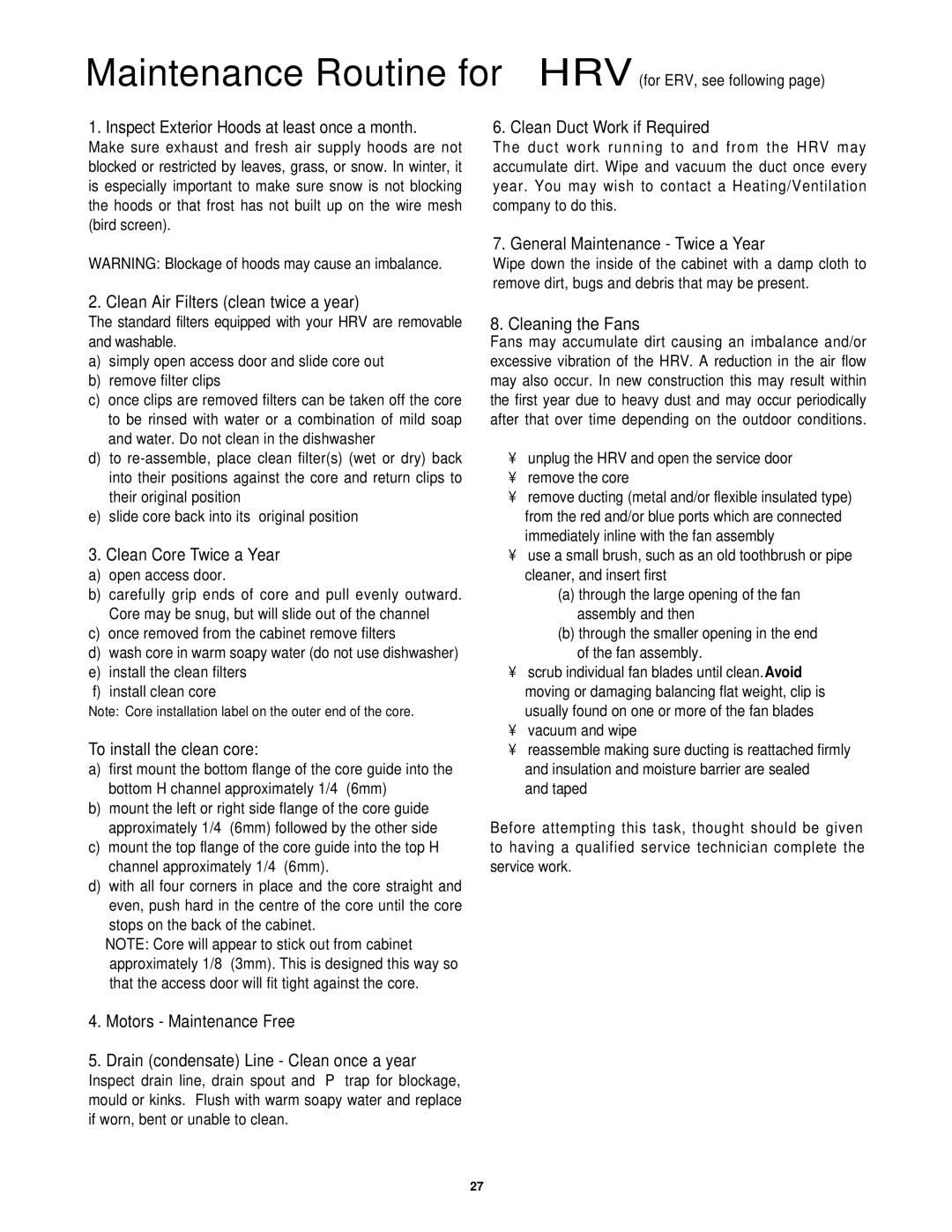155MAX, 95MAX, 200MAX specifications
Lifebreath is well-known for its innovative heat recovery ventilators that enhance indoor air quality while conserving energy. Among their acclaimed models, the Lifebreath 150SP, 200MAX, 150MAX, and 200STD stand out for both their functionality and design, delivering optimal performance for various residential and commercial applications.The Lifebreath 150SP is designed for spaces requiring effective air exchange while maintaining energy efficiency. This model boasts a compact design, making it ideal for smaller homes or apartments. One of its main features includes a top-mounted control panel with a user-friendly interface, allowing for easy adjustment of settings. Equipped with a high-efficiency heat exchanger, the 150SP effectively transfers heat from the outgoing stale air to the incoming fresh air, minimizing energy loss. Additionally, the unit operates quietly, ensuring that comfort is not compromised.
On to the 200MAX, this model is engineered for larger spaces. With increased airflow capacity, it ensures consistent air quality in bigger areas while optimizing energy consumption. The 200MAX features advanced filtering systems that capture dust, pollen, and other allergens, promoting a healthier indoor environment. Its built-in defrosting system operates automatically, enhancing efficiency during colder months. The 200MAX also supports optional accessories, such as a programmable timer and an energy recovery ventilator, allowing users to customize performance to meet specific needs.
The Lifebreath 150MAX pairs the efficiency of the 150SP with added versatility. This model is suitable for mid-sized spaces and comes equipped with a dual motor system. This unique feature provides users with the flexibility to adjust airflow independently, accommodating varying room conditions. The 150MAX excels in both heating and cooling modes, ensuring comfort year-round.
Finally, the Lifebreath 200STD offers a straightforward approach to ventilation without compromising on performance. Designed for standard residential applications, the 200STD is easy to install and maintain, featuring a washable pre-filter. This model is energy efficient and operates quietly while delivering excellent air exchange rates, making it perfect for families seeking reliable indoor air management.
In conclusion, the Lifebreath range—150SP, 200MAX, 150MAX, and 200STD—showcases superior design and cutting-edge technology. With their focus on energy efficiency, user comfort, and adaptable features, Lifebreath models uphold a promise of high indoor air quality and sustainable living. These systems not only contribute to a healthier environment but also reduce energy costs, making them an ideal investment for any modern building.
